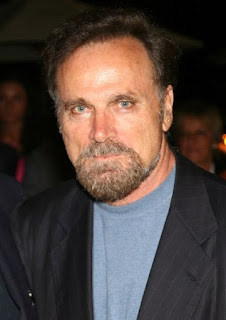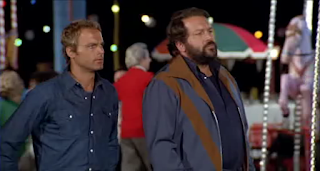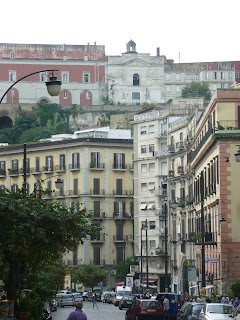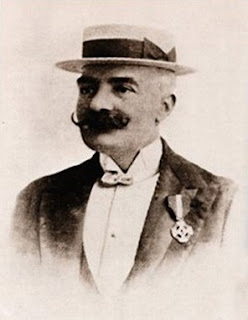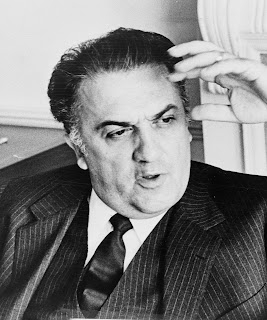Soprano was wordless voice of Morricone soundtracks
 |
| Dell'Orso was 29 when she began her long association with Ennio Morricone |
The singer Edda Dell’Orso, best known for the extraordinary range
of wordless vocals that have featured in many of composer Ennio Morricone’s
brilliant film soundtracks from the 1960s onwards, was born on this day in 1935
in Genoa.
Her collaboration with Morricone began when he was
contracted in 1964 to provide the musical score for A Fistful of Dollars, the
first of Sergio Leone’s so-called spaghetti western trilogy that was to make
Clint Eastwood an international star.
Leone’s producers could only offer Morricone a small budget,
which meant his access to a full orchestra was limited, forcing him to
improvise and create sound effects in different ways. One idea he had was to replace
instruments with human voices, which is where Dell’Orso, a distinctive soprano,
came into her own.
Born Edda Sabatini, she had pursued her musical interests
with the support of her father who, while not musical himself, could see that
she had potential as a pianist.
The quality of her voice became clear when she enrolled at
the National Academy of Santa Cecilia, the renowned music school in Rome, where
she graduated in 1956 in singing and piano and met her future husband, Giacomo.
 |
| Edda Dell'Orso has enjoyed a long career in the Italian cinema |
At the time, there was work to be had in Rome’s recording
studios, providing backing vocals for TV and film productions, as well as
recording artists. Working for the composer
Franco Potenza, Dell’Orso once performed with Frank Sinatra during a visit to
Rome by the American singer, whose family originated in Sicily.
In the early 1960s, she joined I Cantori Moderni (The Modern
Choristers), a choral group run by the composer Alessandro Alessandroni, a
lifelong friend of Morricone and the man to whom he turned when he needed to be
imaginative in his soundtrack for Leone.
It was Alessandroni’s musicians who provided the whistling
and the twanging guitar in the scores for all of the Dollars trilogy. On
hearing Dell’Orso, the group’s solo soprano, Morricone realised, he said later,
that he had "an extraordinary voice at my disposal".
As Dell’Orso recalled in a recent interview, it was hardly
glamorous work. Rather than turning up
on set and rubbing shoulders with the stars, she would report to the studio, and
after one quick read of the musical score be required to either sing with the
orchestra in the hall or step into a booth, wearing headphones, to sing along with
a recording.
Often, she would be at the studio all day, recording several
pieces for different composers of different soundtracks. Although she would
keep notes in her diary of which film and which maestro she had performed for,
there were so many that she found it difficult to keep track. Moreover, the singers had no way of knowing
if a piece would be used and sometimes did not find out until a movie was
released.
Listen to Dell'Orso's voice on the Ecstasy of Gold by Ennio Morricone
Nonetheless, it was the making of her. Capable of infusing her voice with high drama,
playful humour or haunting poignancy, she was called upon time and again, not
only by Morricone but many other composers, including Bruno Nicolai, Piero
Piccioni, Luis Bacalov and Roberto Pregadio.
In all, she worked on the soundtracks of around 60 films, for
which Morricone was the lead composer in more than 30, from the Dollars trilogy
to, in more recent times, Giuseppe Tornatore’s 2013 romantic mystery La migliore
offerta (The Best Offer), which was entitled Deception when released in the UK.
Despite rarely being asked to sing words, many albums of
Dell’Orso’s music have been released and even in her 80s she is still performing. She lives in Rome with Giacomo, to whom she
has been married for 57 years.
Genoa, Dell’Orso’s home city, is the most westerly port city
in the Italian mainland, situated just 177km (110 miles) from the French
border. Clinging to the coastline between
the Mediterranean and the sharply rising northwestern Apennines, its metropolitan
area stretches for about 30km (19 miles) from east to west, although the centre
is relatively compact, comprising the centro storico (historic centre) and the
Porto Antico. Worth visiting are the Palazzo
Ducale, on Piazza Matteotti, and the 12th century Cattedrale di San
Lorenzo, handsomely fashioned from black granite and white marble.
The heart of the Italian film industry is Cinecittà, the
studio complex on Via Tuscolana, about 10km (6 miles) southeast of the centre
of Rome. Built in the Fascist era as
Benito Mussolini tried to revive the at-the-time flagging Italian movie
business, it is the largest studio complex in Europe. In the 1950s, nowhere outside Hollywood
produced more movies. Scenes from Roman Holiday, Beat the Devil, The Barefoot Contessa
and Ben-Hur were all shot there during the 1950s, and the studios became
closely associated with the director Federico Fellini. More recently, the complex has provided sets
representing the interiors of both St Peter’s Basilica and the Sistine Chapel for
a 2016 TV series, The Young Pope.
More reading:
Also on this day:
(Picture credits: Ducal Palace at Genoa by Andrzej Otrębski; Cinecittà Studios by Emanuela Meme Giudici; via Wikimedia Commons)


